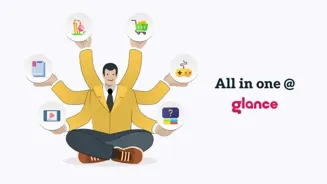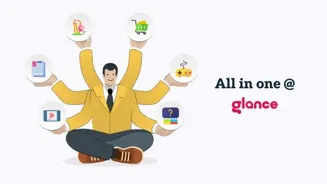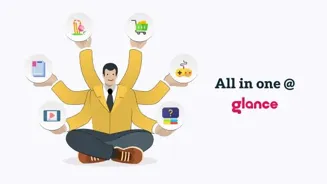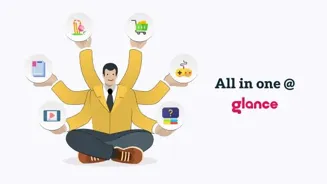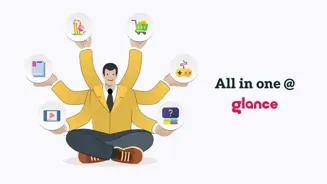Enhance Team Collaboration: 7 Effective Strategies for Indian Businesses. Improve communication to boost productivity & success
In today's fast-paced and interconnected work environment, effective communication
is the cornerstone of any successful team. When team members can communicate clearly, respectfully, and efficiently, they are better equipped to share ideas, resolve conflicts, and achieve common goals.
However, communication breakdowns can lead to misunderstandings, frustration, and decreased productivity. This article explores seven practical strategies that Indian businesses can use to enhance team collaboration through improved communication.
By implementing these techniques, organisations can foster a more positive and productive work environment, leading to enhanced team performance and overall success. These strategies emphasize clarity, active listening, and mindful approaches suitable for diverse Indian work cultures.
Effective team communication through clear channels ensures consistency and eliminates confusion
One of the most crucial aspects of effective team communication is establishing clear communication channels.
This means identifying the appropriate platforms for different types of communication – be it email for formal announcements, instant messaging for quick updates, or regular team meetings for in-depth discussions.
When teams have defined communication channels, it eliminates confusion about where to find information and promotes consistency in how information is shared.
Indian organisations can leverage a mix of traditional and modern communication tools to cater to the diverse technological proficiency of their workforce. For instance, while younger employees might prefer instant messaging apps like WhatsApp or Slack, some senior members might still prefer email.
It's essential to establish clear guidelines on when to use each channel and to ensure that everyone is comfortable and proficient in using them. Clear roles and responsibilities are also extremely important.
Active listening crucial in diverse Indian teams for effective communication, bridging gaps
Active listening is another vital component of effective team communication. It involves paying close attention to what others are saying, both verbally and nonverbally, and making a conscious effort to understand their perspective.
In a diverse cultural context like India, where communication styles can vary significantly, active listening becomes even more crucial. While some team members might be direct and assertive in their communication, others might be more indirect and rely on nonverbal cues.
Active listening helps to bridge these communication gaps by encouraging team members to ask clarifying questions, summarize what they've heard, and demonstrate empathy towards their colleagues.
Creating a safe and supportive environment where team members feel comfortable sharing their ideas and concerns is essential.
Indian work environments often value hierarchy, and it's important to encourage open communication by creating platforms where junior team members can share their thoughts without fear of judgment or retribution.
Constructive feedback is crucial for team improvement in Indian work culture
Providing regular and constructive feedback is essential for improving team performance. Feedback should be specific, timely, and focused on behavior rather than personal characteristics.
In Indian work cultures, where criticism might be perceived as personal attacks, it's important to deliver feedback in a respectful and considerate manner.
Focus on highlighting both strengths and areas for improvement, and always frame feedback in a way that is aimed at helping the individual grow and develop. Positive reinforcement is another powerful tool for boosting team morale and motivation.
By acknowledging and appreciating team members' contributions, organisations can create a culture of recognition and appreciation. Recognizing individual and team achievements, both publicly and privately, can significantly enhance team cohesion and productivity.
Nonverbal cues crucial for understanding diverse cultures
Nonverbal communication plays a significant role in how we perceive and interpret messages. Paying attention to body language, facial expressions, and tone of voice can provide valuable insights into a person's emotions and intentions.
In a multicultural setting like India, where nonverbal cues can vary significantly across different regions and communities, it's essential to be aware of these differences and to avoid making assumptions based on one's own cultural norms.
For instance, a nod of the head might signify agreement in some cultures, while in others it might simply indicate that the person is listening. Similarly, eye contact can be interpreted differently depending on the cultural context.
By developing an awareness of these nuances, team members can avoid misunderstandings and build stronger relationships.
Clear, simple language is key for effective communication in diverse workplaces
Using clear and concise language is essential for effective communication. Avoid jargon, technical terms, and ambiguous language that might be confusing or difficult for others to understand.

In a diverse workforce, where team members might have varying levels of English proficiency, it's important to use simple and straightforward language that is easily accessible to everyone.
Visual aids, such as charts, graphs, and diagrams, can also be helpful in conveying complex information in a clear and concise manner. When communicating across different regions in India, it's also important to be mindful of regional dialects and idioms.
While you don't need to be fluent in every language, being aware of the local expressions and avoiding language that might be offensive or misunderstood can go a long way in building rapport and trust with your colleagues.
Embrace tech for seamless communication & collaboration with tools like Asana, Google Drive, Zoom
Finally, embracing technology to enhance communication and collaboration is essential. Utilizing project management tools, shared document platforms, and video conferencing software can facilitate seamless communication and collaboration, especially for remote teams.
Project management tools, such as Asana or monday.com, can help teams track progress, assign tasks, and manage deadlines efficiently.
Shared document platforms, such as Google Drive or SharePoint, allow team members to collaborate on documents in real-time and ensure that everyone is working with the latest version.
Video conferencing software, such as Zoom or Google Meet, enables face-to-face communication, even when team members are geographically dispersed.
It's important to choose the right tools that cater to the specific needs of the team and to provide adequate training and support to ensure that everyone can use them effectively.
AI Generated Content. Glance/InMobi shall have no liability for the content


